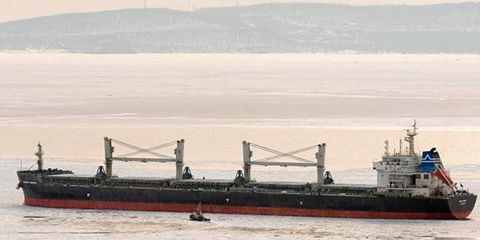The International Maritime Organization used the last year to lay out a goal to achieve net zero greenhouse gas emissions by the middle of the century, but 2024 will be key to developing the policy mechanisms that would turn that target into a reality.
Final decisions on those measures — including putting a price on emissions and developing rules that would ratchet down the carbon intensity permitted in fuels — are not scheduled until 2025.
There are two key gatherings of the Marine Environment Protection Committee, each preceded by working group meetings, to move the deliberations towards that goal.

Tristan Smith, an associate professor at the UCL Energy Institute whose research focuses on shipping, said that the final meeting in the autumn needs to conclude with a “very narrow definition” of the measures that the IMO is going to ultimately adopt. Having consensus about those measures when that meeting concludes in early October is key so the “boring” but important details are not developed at the last minute when the measures are adopted and then finalised in 2025.
However, he emphasised that the realisation of this goal hinges on the positive outcomes of the ongoing processes aimed at formulating a comprehensive assessment of the potential impact that the under-consideration policy mechanism will have on both individual states and the global shipping fleet.
The IMO’s work schedule calls for delivering an interim report for the year’s first environment committee meeting in March, intending to finalise a basket of measures at the gathering. But Smith pointed to the fact that a consultant will not be contracted to carry out a key part of the assessment until the end of December or early January.
- 18 to 22 March 2024: The committee will discuss an interim report on the comprehensive impact assessment of the candidate’s midterm policy measures. The finalisation of a basket of measures is scheduled for this meeting.
- 30 September to 4 October 2024: The committee is scheduled to discuss the final report on the impact assessment.
- Spring 2025: Committee members will review short-term measures, including the Carbon Intensity Indicator, with completion scheduled for 1 January 2026.
- Autumn 2025: An extraordinary one or two-day committee meeting will be held for the formal adoption of the midterm measures.
- Spring 2026: Revisions of short-term measures are to be approved.
“I think it looks now very clearly unlikely there will be material results in advance of that meeting, which makes it very difficult to have an evidence-based discussion at that meeting,” he said, pointing out that it does not have to forestall a good political discussion.
Natasha Brown, the IMO’s head of public information services, noted that hiring a consultant only addresses a single component within the broader impact assessment puzzle. She said that it is not likely to prevent the committee from discussing the basket of measures in the spring with undecided details to be discussed further at a later stage.
But ultimately, IMO member states will decide whether they have enough information to move forward.
“It is going to be up to the member states to look at the information they have, and they may say, ‘We’re going wait for that task to be completed before we move any further’,” Brown said.
Johannah Christensen, chief executive of the Global Maritime Forum, said it will be important for shipping industry stakeholders to inform the decision-making process at the IMO to help lay the groundwork for the big decisions to be made in 2025.


That includes “seeding the conversation” with the experiences of first movers by creating a dialogue between public and private sector stakeholders who are not just talking about energy transition but already testing what can be achieved without the policy tools in place.
Christensen pointed out that the midterm policy measures under discussion at the IMO, including a carbon levy, are not focused primarily on this decade but on rapidly scaling up decarbonisation between 2030 and 2040.
Adjustments to near-term measures, such as the Carbon Intensity Indicator and other policies currently in place, are scheduled to be adopted in 2026.
But she said regulators outside the IMO could play a big role in getting to the United Nations body’s goal of having 5% to 10% uptake of zero-emission fuels by 2030.
“We shouldn’t underestimate the role of national action, especially in this decade, in supporting early movers and especially getting both the shipping sector and land-side energy production side of things to a place where it can be rapidly scaled up,” she said.




